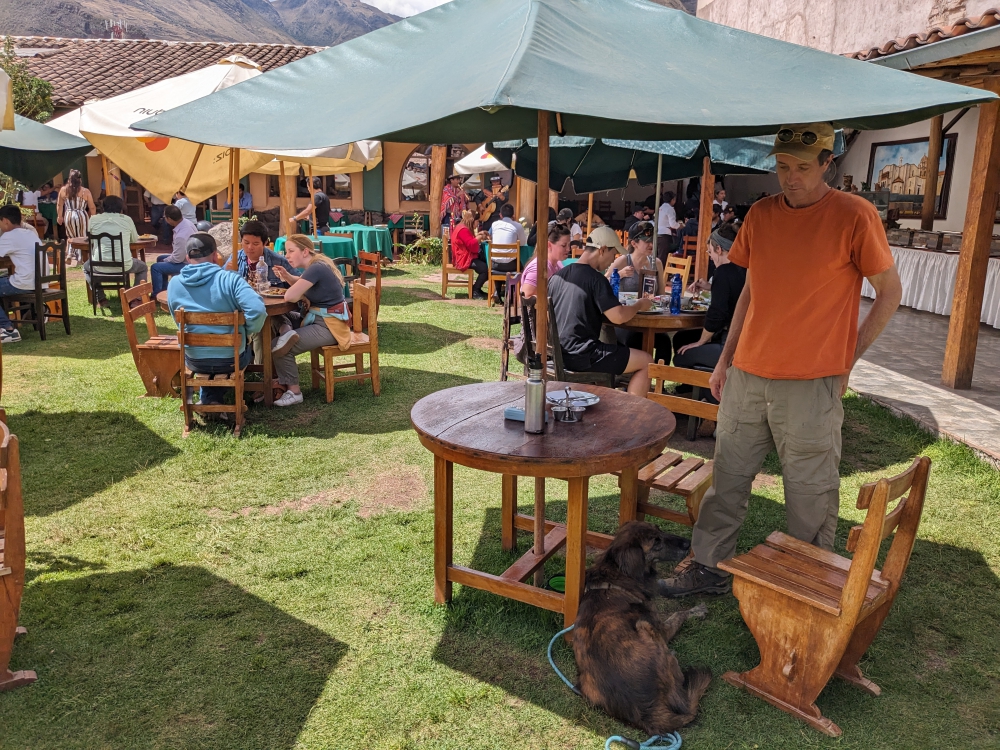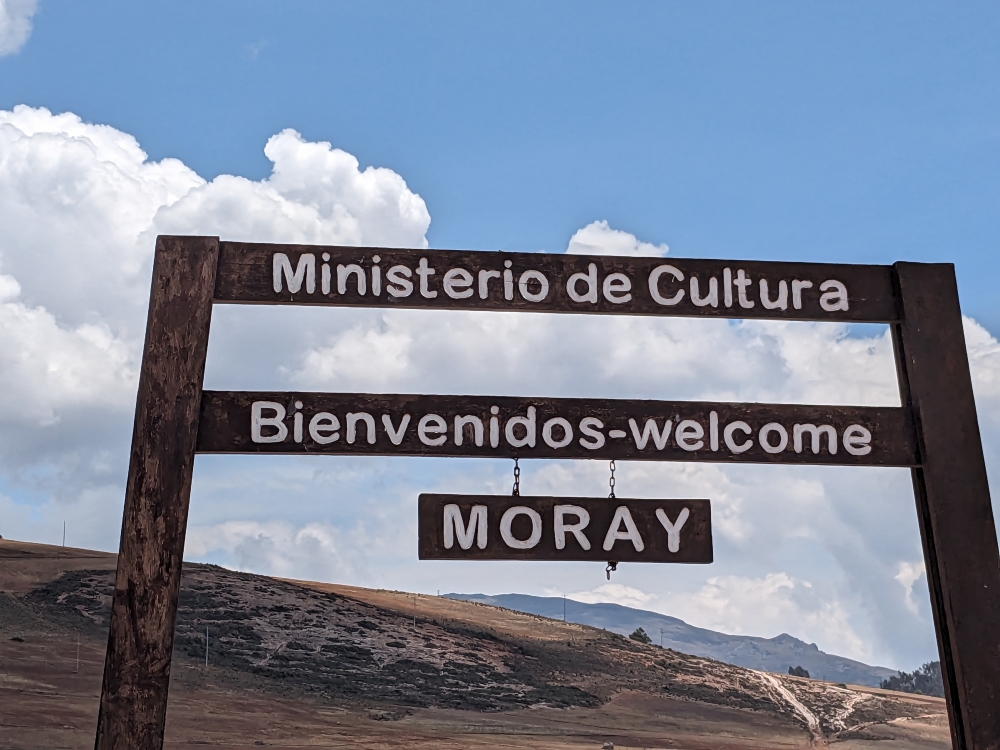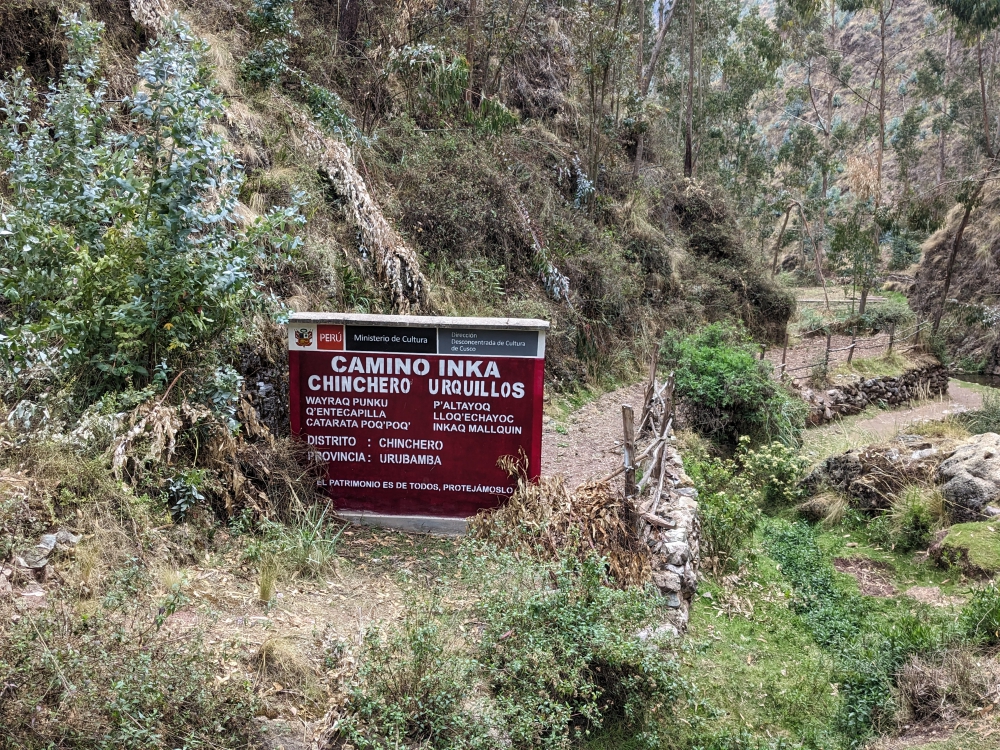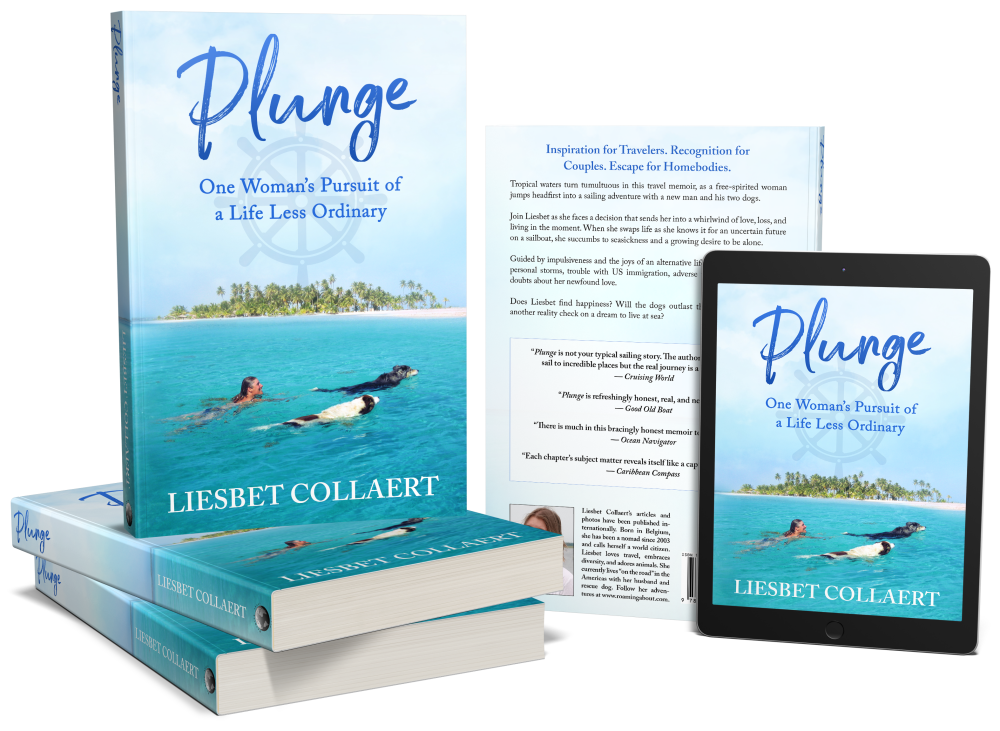After two weeks in Cusco, doing camper projects, running errands, being sick, and exploring the historic center, our plans turned a bit tricky. My cousin and her husband, perfect guests who visited us frequently when we sailed in the tropics, had booked plane tickets to join us in the Cusco area for two weeks, towards the end of November, following a two-week bus tour through Southern Peru. Nothing tricky about that, except for the fact that our immigration stamps expired the end of October…
Based on accounts from other overlanders, we believed we had a good chance to obtain another sixty days in Peru, at the border with Bolivia; an ordeal we’d have to figure out later and something I worried about for over a month. It was mid-October now and we had two weeks left in the country.
We expected to visit the Sacred Valley with my family, but what if we wouldn’t be allowed back into Peru? Were we willing to miss out on this country’s highlights, like Machu Picchu, Arequipa, and the villages and archeological sites in the Valle Segrado?
Mark and I opted for an in-between solution: we skipped famous Machu Picchu (expensive and a hassle to get to) – for now – and bought a two-day tourist ticket for 70 soles/$20 each to visit the highlights of the Sacred Valley. This would be a different way of traveling for us, who usually take it slowly, camping wherever it looks attractive. We had two days to explore five sites and two historic villages!
Pisac archeological site
From the Cusco campground, we headed uphill, past the trio of ruins we’d checked out previously, via a viewpoint that offered potable water from a spigot, to a pull-out along a quiet road for the night. The following morning, we descended into the valley and spotted the famous terraced hills of Pisac.
Traveling with a camper makes it easy to leave our dog behind, in a cool and shady environment with plenty of water. Mark and I braved the long climb to the citadel, breathing heavily in the thin air and taking many breaks.
The Pisac archeological site is a large Incan complex of agricultural terraces, residences, guard posts, watchtowers, and a ceremonial center along a mountain ridge above the town of the same name. It was built around 1440.
Little is known about the site’s actual purpose. Researchers believe that old Pisac defended the southern entrance to the Sacred Valley and was an observatory and religious site.
The best way to explore this destination is by taking a taxi or minibus to the entrance, climbing the hill, and then following a path down to Pisac town. Since we had our vehicle with us, we only visited the top part of this impressive site.
Pisac town
“If we find a parking spot on the edge of town, we will stop,” Mark said, as we made our way back from the ruins to the main road. In a way, it was nice to know we would visit these places with my cousin later, in case it didn’t work out now.
Luckily, we found an opening that was wide and off the road enough, to park Thirsty Bella. We had a busy day, so only strolled through this cute, historic town for half an hour. Enough to get a good feeling for its appeal.
The drive to Ollantaytambo, our next destination, would take two hours and was relatively uneventful. The road was paved and navigable, without much garbage scattered alongside. We stopped in hectic Urubamba for a tasty and affordable lunch. This outdoor buffet restaurant (El Maizal) was a favorite among tour groups, so finding a parking spot wasn’t easy. While other gringos were lured into the $10 buffet, Mark and I enjoyed the “day menu” version with less food items to choose from, but equally as tasty, for $4 per person.

Popular lunch place in Urubamba
Ollantaytambo archeological site
Talk about an old town with narrow streets! Somehow, by following a bus and being super patient, we made it to the other side of Ollantaytambo without incidents. Masses of tourists flooded the alleys and the artisanal market, some of them walking over for a chat and congratulating us for taking this giant vehicle through town.
We reached a sizeable, level parking lot, where we could sleep in the camper for $4. After getting settled, it was time for our next tourist attraction. If it wasn’t for this tight schedule, I’d rather have had a cup of tea at our dinette table and a stroll through town, this late afternoon, and check out the ruins in the morning…
Maya was left in the camper again (something that rarely happens) and Mark and I allowed ourselves an hour and a half to explore the amazing archeological site of Ollantaytambo, which easily became our favorite. It was built and used by the Incas as a city, fort, and royal estate with big terraces and a ceremonial area.
Trying to avoid the groups of tourists and school children, we first explored a quieter area, before climbing Temple Hill, passing the terraces of Pumatallis, framed on both sides by rocky outcrops. Access to the ceremonial center is via a series of stairways that climb to the top of this terrace complex.
Ollantaytambo town
Until we visited this incredibly picturesque town, we had no idea how to pronounce it. That effort had to wait until we set foot in this charming place and meandered through as the sun set.
When it was time for Maya’s morning potty walk at 7:30am the next day, we found ourselves locked inside the parking lot. Luckily, the fence contained a hole to crawl through and lift Maya to the other side. Mark had spotted a smaller archeological site on Google Maps and we set out to “discover” it.
After some trial and error, generally heading towards the river (and the train tracks), we found these ruins, which were a joy the explore and photograph in the morning light. After breakfast back home, it was time to complete our Sacred Valley loop.
Maras salt mine
Ignoring Google’s directions to send us over a bridge and roads we didn’t fit on, we retraced our steps back to Urubamba and found the main road south. When we saw buses and a giant overlanding rig, we knew we were headed the right way. A dusty dirt road brought us to the entrance of the Maras salt mine. The $3 per person entrance fee to this site is not included in the Boleto Turistico (tourist ticket). Again, we had to get used to the amounts of tourists and vans and parked well away from the chaos.
Because Maya was waiting for us in the car – and getting tired of that – we made this a quick stop. It was an impressive sight nevertheless. These salt ponds have been in use for over 3,000 years, well before the Inca Empire. Now owned by local families, Peruvians are still actively producing pink salt, which you can purchase at one of the many stands.
Moray archeological site
As always, Mark and I had no expectations and never saw any photos before we arrived at the next site, Moray.

So, when we approached the cliff edge and looked down into the circular terraces, we were suitably impressed. I just love that feeling of approaching a place you know is popular, but having no idea how it actually looks like.
It took us about half an hour to follow the path around the site and join Maya again. These were good tests for our separation anxiety prone dog. One more time today, sweet pea!
Country drive
Since we really struggled with the narrow streets, illegally parked cars, and wrong directions from our GPS in the town of Moray before reaching the ruins, we decided to leave the area via a different way. Decent dirt roads lead us through quiet and bucolic scenes towards our next destination. While slow, we enjoyed this route immensely, eating lunch somewhere along the way.
Chinchero archeological site
Our last stop of the day was Chinchero, where we could park on a nice lot for 24 hours, paying only 30 cents. And, we had a relatively quiet night as well, despite the barking neighborhood dogs. But first, Mark and I climbed to the ruins via the old, cute, and steep part of town.
We ventured on the different terraces and gazed at the pretty church and plaza from colonial times. This place was deserted and we wondered how the many handicraft vendors made a living. The answer came an hour later, when all the tour vans showed up to conclude their one-day Sacred Valley excursion here.
Inca Trail
The following morning, before leaving towards Cusco and beyond, Mark and I took Maya for a nice walk into the valley. We had seen a sign for a waterfall, but had no idea how far – or steep – down it was located. We’d hike to a viewpoint and regroup there.
Well, the trail went seriously downhill. The surroundings were lush and attractive, and we discovered this foot path was part of the famous Inca Trail. Cool! Yet, the more we descended, the more strenuous it would be returning to our camper… I feared a headache but enjoyed the trail, so we all made it to the viewpoint, from where we could not see a waterfall; a tad disappointing.

We stumbled across the Inca Trail!
This spot was about 2/3 of the way to the actual falls, deep in the canyon. We passed on the continued effort and huffed and puffed our way up, taking our time. We met one Quechua couple and two Peruvian families. It was the weekend.
Halfway back up the trail, Mark realized he’d forgotten Maya’s leash on the bench at the mirador. He swiftly turned around and basically ran back down the trail to the viewpoint, overtaking the local tourists, while I slowly continued uphill with Maya. When he returned home, thirsty and out of breath, he stated the leash had been gone, something we feared. When indigenous people see something they can use, they will take it without thinking. It had happened with a piece of rubber mat that had fallen out of our truck in Central Peru as well.
Our whirlwind Sacred Valley tour came to an end. We headed back to Cusco, navigated the busy streets there, ran errands on the outskirts, and had the valve of our spare tire replaced when leaving the area.
Our next destination would become our highlight of Peru. Stay tuned!
Note: None of these fantastic, ancient, interesting, and important destinations have information provided on site. Nothing! You either research facts ahead of time, or you hire a local guide.
Next up: Our (painful) expense report for October.
Curious about a previous ten-year chapter in our nomadic lives, which includes eight years aboard a 35-foot sailboat in the tropics with dogs, check out my compelling, inspiring, and refreshingly honest travel memoir:
















































































































November 6, 2023 at 20:57
The scenery is spectacular as always. I takes lots of photos too but not the number you show on each post. How do you catalog and store your photos?
November 6, 2023 at 21:08
Hi Marian,
I’m taking – and posting – way too many photos! On the blog, I share just a fraction of those and I always have a hard time picking them and keeping it to a “minimum.”
Sometimes, I want leave the camera home on a hike and just enjoy the scenery. Which I do. And then I notice – or we experience – something incredible and I wished that I’d brought the phone.
Every week, I take about 500 photos if not more. Each evening, I go through the photos of the day on my phone and delete about a third. The photos stay on the phone until I’ve used some of each destination for my daily Facebook posts.
Then, I move them to my laptop, where they sit in a “picture” folder until I have time to go through them again and archive them. Sometimes that takes a couple of weeks as well and by then I have hundreds of photos to put into folders, which I arrange chronologically and name after the location with the dates that we camped there. Every country has its own folder. Also, the photos are backed up onto a hard drive.
To be honest, my archives are becoming insane and I never find photos back when I’m looking for a particular one. We are doing and seeing too much. Not a complaint, but the same is happening with my diaries. They are too long. I wish we could just have a boring day once in a while… It never happens.
November 6, 2023 at 22:28
What a wonderful trip back in time for me, especially via the great photos you took in each of these Sacred valley towns. Your pictures brought back weird little memories, like eating cuy (guinea pig) in Chinchero, drinking chicha in Ollantaytambo, and almost falling off a cliff as we we approached Maras! I’m glad you finally had some days with good camping spots and plenty of natural (and man-made) beauty. The stonework is just exquisite, isn’t it? It’s so hard to imagine it being done at the time it was – no power tools, no big trucks to move things … incredible!
November 8, 2023 at 09:29
Hi Lexie,
I like the chicha morada drink! We’ve seen the purple corn for sale on the markets, but haven’t bought and cooked with it yet. Maybe soon.
And, cuy, nope. Not tried that and might never try it. I always said that if a local family asks us over for lunch or dinner and cooks Guinea pig, sure, but that hasn’t happened in Peru.
The falling off a cliff doesn’t sound too good. Maras and the Sacred Valley are so darn busy. And, you can’t get early everywhere to avoid the crowds. For us, it’s mostly the parking that’s a pain, because the tour van drivers don’t care about anything and either block us in, or block us from entering parking lots.
The stonework is incredible and I think it’s the highlight of all these archeological sites.
November 7, 2023 at 03:15
Absolutely stunning place, we visited this area on a day tour from Cusco back in 2018. It was a bit rushed, but nevertheless we loved it.
Your photos are gorgeous, do you have a camera or just use your phone? In recent years I have just been taking photos with my phone, but sometimes wish I had a good camera. Like you, I love taking photos and take far too many. Looking forward to your next post 😀
November 8, 2023 at 09:34
Hi Gilda,
The Sacred Valley day tour from Cusco gives you a great sample of the important sites to see. I kept thinking about the tourists who only had one day to see what we spread over two days and still felt rushed. But, the tour van drivers go much faster on the roads than us! 🙂
These days, like you, I’m just taking photos with my (first ever) Smartphone, a Google Pixel 6a. It takes great photos and videos, but I sometimes wish I had a zoom lens for wildlife. Just a few days ago, I dug my camera back out to take photos of vicuñas, flamingoes, and condors. I’ll have to see if any came out, as I’d have to transfer them back to my computer (the old-fashioned way) first.
Some features of the phone drive me crazy, though. In some parts, I enjoy taking photos with a real camera better.
November 7, 2023 at 07:41
Some amazing sites. What’s nice is you actually get to climb those stairs and ruins and explore.
November 8, 2023 at 09:36
Hi Alex,
In Latin America, the rules are less strict at these sites than in the US and Canada. As an example: two days ago, we visited a geyser in the Andes Mountains. No signs. No barriers. No rangers. We could all just walk up to the scolding steam and stick our heads in it! (Which we didn’t do, of course. And, we left our dog at a safe distance from the boiling water and mud.)
November 7, 2023 at 08:13
Thanks for the beautiful pictorial. You visited a lot of interesting sites in a short period. Honestly, when I think of Puru, I only see images of Machu Picchu in my mind, so I appreciate the reminder that there is more to the country than just that.
November 8, 2023 at 09:38
Hi Suzanne,
You’re right, Machu Picchu seems to be the highlight of Peru. But, this is a huge country. We’ve spent over three months here now and still haven’t gone to MP, which I have a feeling is overrated. But, we have tickets booked for my birthday, so we will see… It’s an ordeal to get there, nevertheless.
When talking to other overlanders who explored Peru, none of them mention MP as their highlight, but just as “something you have to do when you’re here.”
November 7, 2023 at 11:14
I love your travels, vicariously join you each step. If this becomes a book (like Plunge), I’ll be buying it.
November 8, 2023 at 09:40
Thank you, dear Jacqui! After I finished Plunge, I never thought as many life-changing things could happen later on in my travels, but I can now guarantee that I have many more exciting (maybe not life-changing) tales to share. As a matter of fact, it doesn’t seem to stop and I sure could use a little break from all the challenges!
November 7, 2023 at 11:30
Ditto what Jacqui just said.
And 500 photos each week. That is incredible. You are exceptionally organized.
I am loving travelling along with you from my computer and look forward to reading about the highlight of Peru.
November 8, 2023 at 09:43
Hi Donna,
Thank you for the encouragement and support. And, yes, I’m constantly taking photos, often probably more than 500 a week. Then, I delete about 1/3.
We are exploring so many fascinating parts of the world right now and, because Peru is so big, we have to keep moving and keep sightseeing. It’s been super busy as we – of course – have to combine this with everything else in life, like work, driving, a dog, research, planning, organizing, blogging, writing, ….
I think you will like the post about our absolute highlight later this month! 🙂
November 7, 2023 at 16:33
Wow, it sounds as though things are finally starting to go better for you. And what spectacular scenery! It seems as though Maya is doing better on her own, too. Win! 🙂
November 8, 2023 at 09:48
Hi Diane,
Our most stressful time of the entire trip happened recently, when we needed to secure another two months of time in Peru. More about that ordeal later…
Now, we are slowly letting go of that stress and taking our time again to explore some more remote parts of Peru. I’m happy that the Sacred Valley lived up to its buzz (I won’t call it “expectations,” because we never have any), because we were starting to fear that Peru would remain a bust…
We will see about Maya when the holidays come around. Lots of treats and peanut butter will be in order.
November 7, 2023 at 18:07
Amazing sites / sights! Peru has definitely gone up in your estimation I think.
November 8, 2023 at 09:49
Hi Anabel,
Yes, Peru is redeeming some respect and awe from us, haha. We saved the best for last, it seems like. 🙂 And, one of these days, I’ll be able to report on Machu Picchu.
November 11, 2023 at 18:27
Hi Liesbet, I’m glad you enjoyed the various sites. Your photos brought back memories of my visit to the Sacred Valley and all the stone steps to get up and down. I went there in May and it was greener. Safe travels!
November 14, 2023 at 11:30
Hi Natalie,
We are noticing a change in the weather here now, with rain every day, sometimes on and off constantly. The rainy season is not supposed to start until December, but “normal” weather patterns don’t exist anymore, so we will see. Green surroundings are nice, but rain is an impediment on camper projects, doing laundry by hand, walking, and sightseeing! 🙂
November 13, 2023 at 17:20
Thanks for sharing these beautiful pics with us Liesbet. I’m feeling you are enjoying Peru. You had me at a 4$ meal! 🙂 xx
November 14, 2023 at 12:21
Hi Debby,
Yes, we have found some redeeming qualities about Peru, once we arrived in the southern part. 🙂 The local lunches are a good deal and places like Cusco, Arequipa, and Lima have an amazing food selection and bakeries. And varieties in the meals.
I hope to write my next post soon, as the sites we visited after Cusco are incredible.
November 18, 2023 at 05:54
Well, what stunning scenery. It’s spectacular, Liesbet. Apart from the Mara’s dog lead being stolen, I’m pleased that nothing horrible happened.
I’d sure love to visit this part of Peru. All that history to explore. I wouldn’t want to leave.
November 18, 2023 at 14:41
Hi Hugh,
I guess the Sacred Valley is Peru’s most popular region for a reason! Especially if you like culture, history, and mystery, this is the place to spend a couple of weeks. It’s a shame that no information signs are present anywhere, though. On purpose. So, the local population can hire themselves out as guides…
November 28, 2023 at 17:13
I learned a new verb! Orinar!
The salt mind and the circular terraces seem so sculptural against the landscape. I love them. It’s all amazing and beautiful! Glad you were able to make this journey!
December 19, 2023 at 20:53
Hi Duwan,
Sorry for the late replies. Life has been crazy during our last few weeks in Peru. Really. Insane. And then, we got the flu. Of course. I’ve been overworked, overwhelmed, and over-exhausted for way too long! But, more about that another day.
We have actually seen a lot of “no orinar” signs – written or depicted – just like the “no basura” signs, but none of it seems to actually help! 🙁
The Sacred Valley has a lot of interesting sites and I hope you two will be able to visit soon! We need to catch up again, one of these days/weeks!